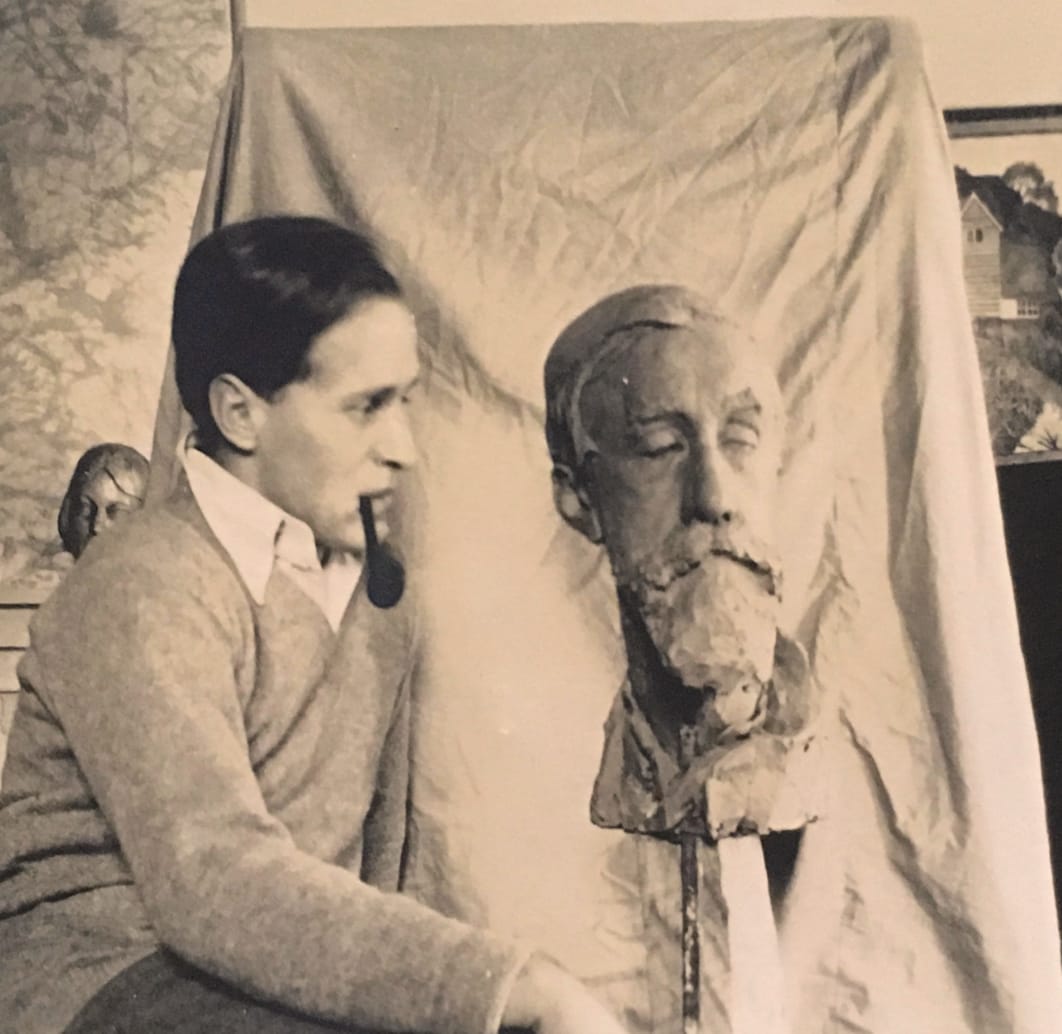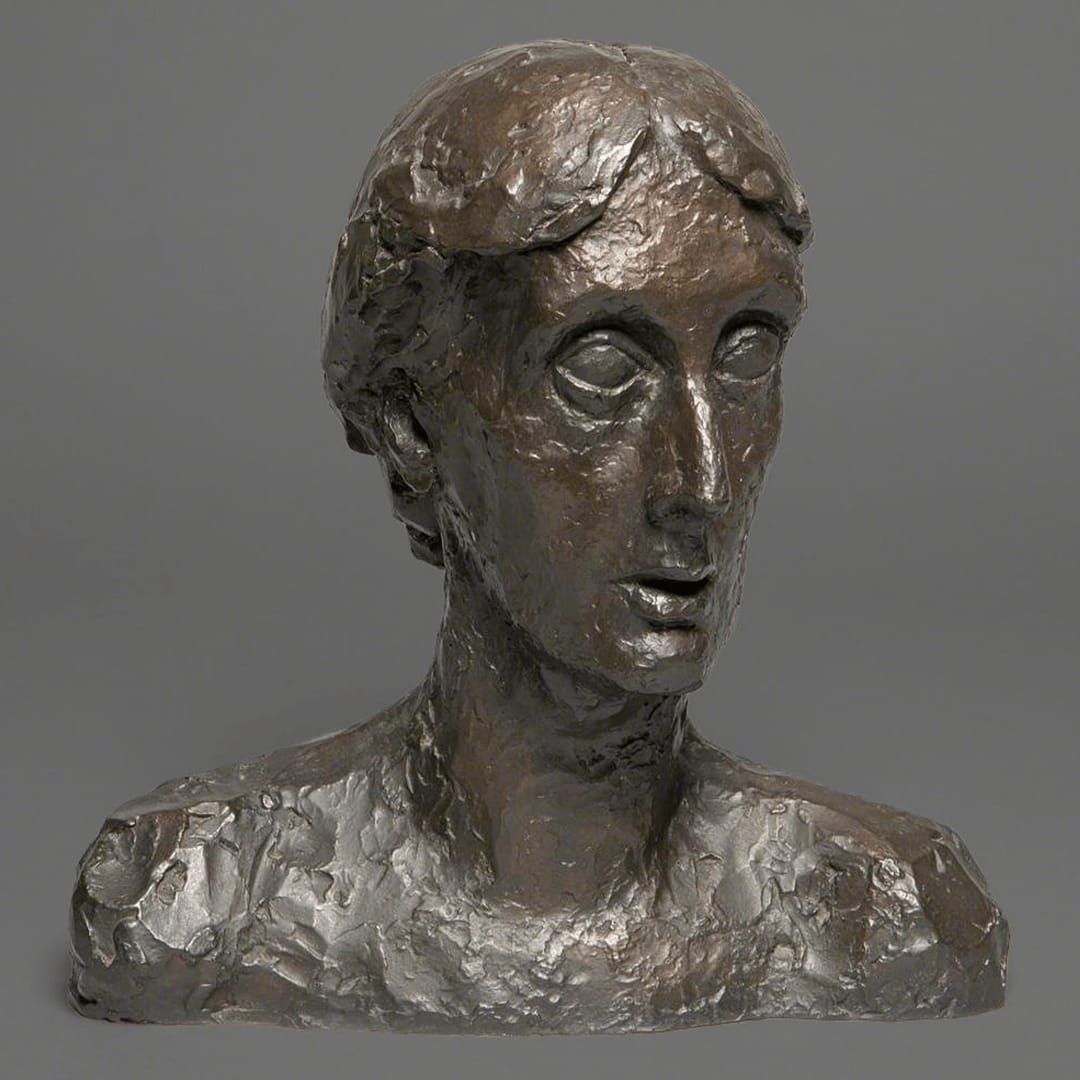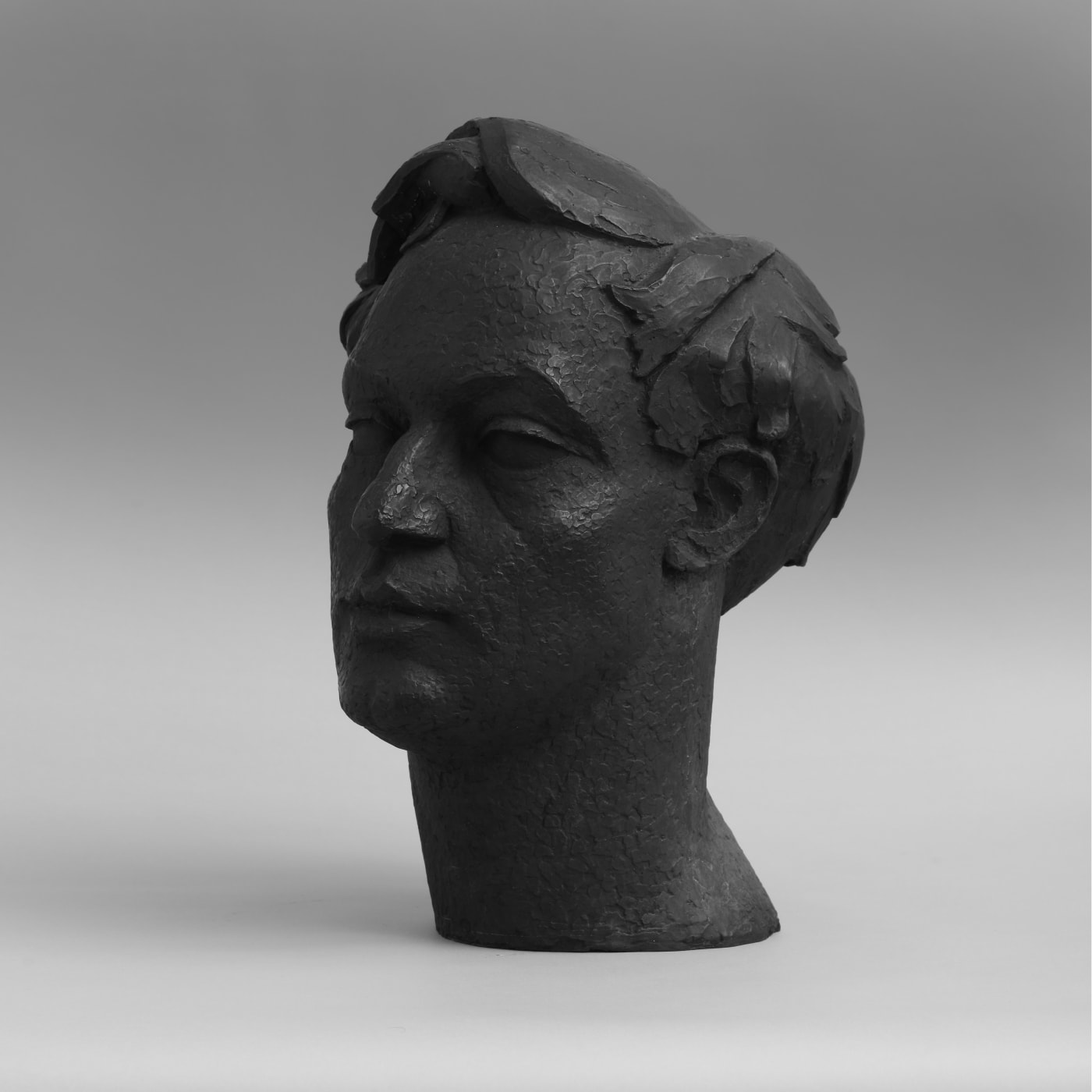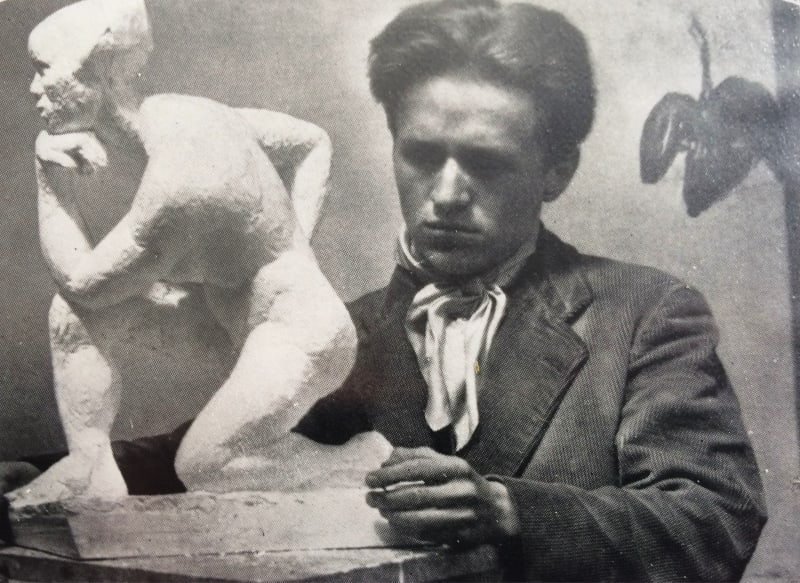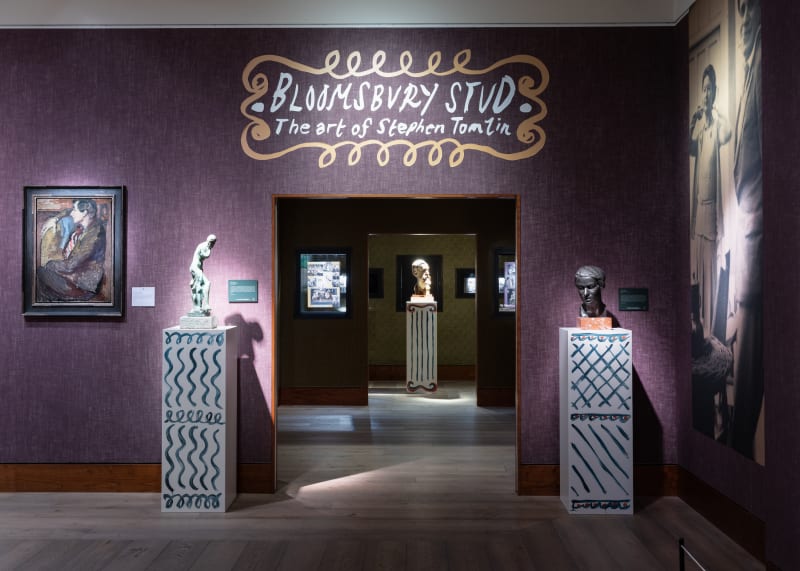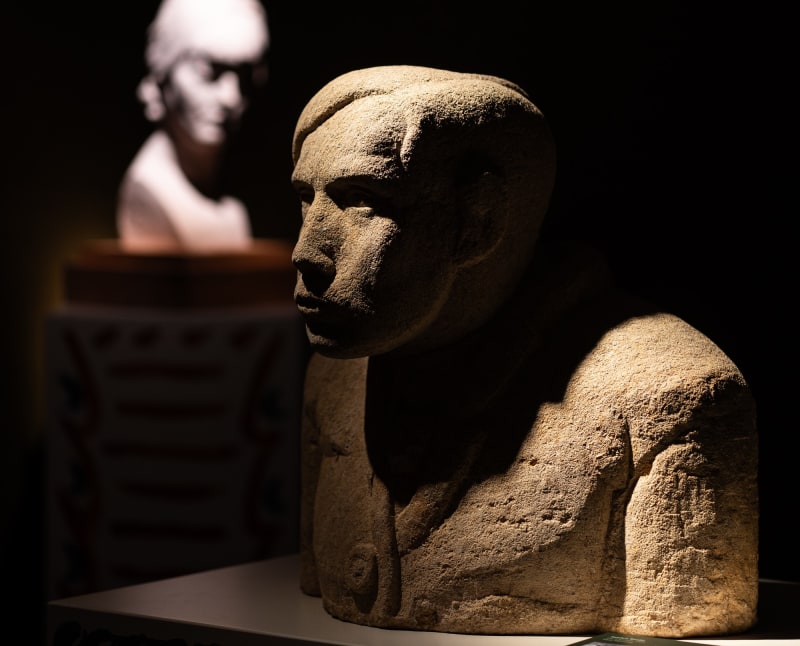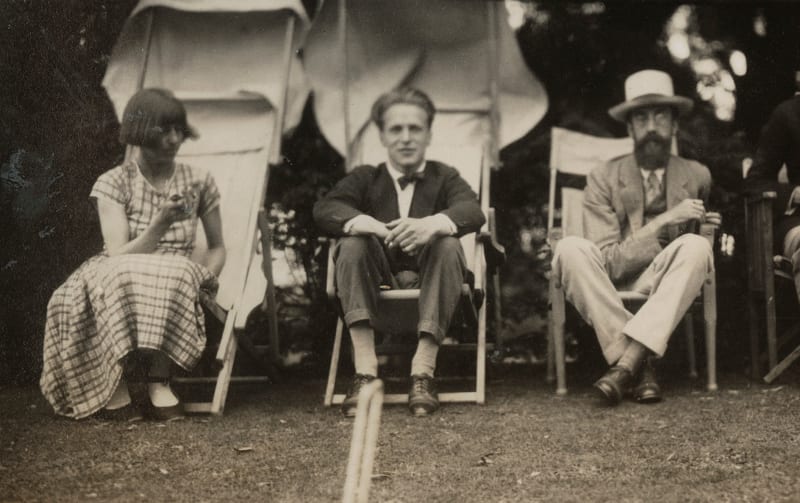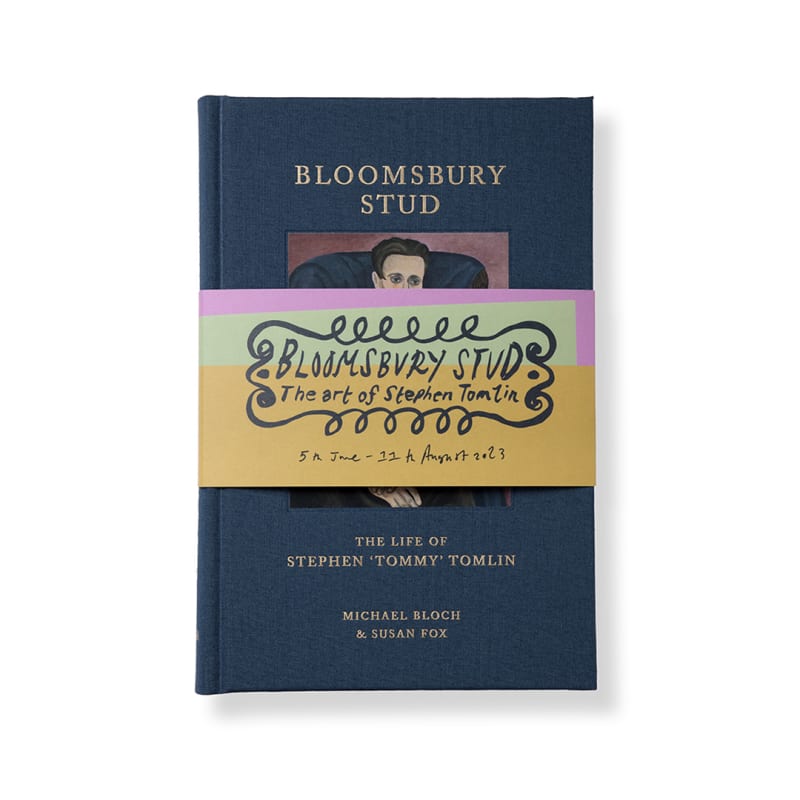Full Biography
Virginia Woolf described him as ‘the devastation of all hearts’, whilst the writer David ‘Bunny’ Garnett proclaimed that he was ‘one of those figures of terrific calm, with whom most ordinary people frankly fell in love.’
Described by Virginia Woolf as ‘the devastation of all hearts’, Stephen Tomlin, whose works are currently offered for sale at Philip Mould & Company, was the Bloomsbury group’s primary sculptor. He immortalised the faces of Bloomsbury’s best-known characters, including Duncan Grant, Lytton Strachey and Virginia Woolf herself.
The youngest son of five children born to Lord Tomlin of Ash and Marion Waterfield, Tomlin was a young man possessed of artistic sensibilities. He attended Harrow School for Boys and briefly studied at New College, Oxford but left after just two terms. Academia didn’t suit the young bohemian. He was prone to focus on his talents as a gifted poet, actor and musician, although he found his metier as a sculptor.
Described by Virginia Woolf as ‘the devastation of all hearts’, Stephen Tomlin, whose works are currently offered for sale at Philip Mould & Company, was the Bloomsbury group’s primary sculptor. He immortalised the faces of Bloomsbury’s best-known characters, including Duncan Grant, Lytton Strachey and Virginia Woolf herself.
The youngest son of five children born to Lord Tomlin of Ash and Marion Waterfield, Tomlin was a young man possessed of artistic sensibilities. He attended Harrow School for Boys and briefly studied at New College, Oxford but left after just two terms. Academia didn’t suit the young bohemian. He was prone to focus on his talents as a gifted poet, actor and musician, although he found his metier as a sculptor.
On leaving Oxford, Tomlin travelled to Cornwall where he is likely to have met his artistic tutor, the artist Frank Dobson. Developing his skills with the celebrated sculptor in Cornwall, and later honing his draughtsmanship at the Slade School of Fine Art under Henry Tonks, Tomlin laid the foundations of his professional career.
Although he was a highly complex individual, Tomlin’s seductive charm and brilliant conversation teamed with his artistic ability ensured that he was much in demand. References to him pepper countless biographies of twentieth-century figures and his Bloomsbury counterparts were equally beguiled by him. Virginia Woolf described him as ‘the devastation of all hearts’,[1] whilst the writer David ‘Bunny’ Garnett proclaimed that he was ‘one of those figures of terrific calm, with whom most ordinary people frankly fell in love.’[2]
Tomlin was a fabled seducer, having affairs regardless of age or sex. Marriage to Julia Strachey, niece of one of his sculptural subjects, Lytton Strachey, provided a brief interlude before his amorous and somewhat scandalous liaisons resumed. Among his numerous lovers, including his wife’s uncle, fellow Bloomsbury members Duncan Grant and Dora Carrington, Tomlin could also count the writer David Garnett, aesthete Eddy Sackville-West and photographer Barbara Ker-Seymer.
Despite his popularity, Tomlin was a secretive character, with a depressive nature and an increasing reliance on alcohol and drugs, all of which combined to lead him to an early and lonely death at the age of 35.
Tomlin’s artworks can today be found in national collections including the Tate, the National Portrait Gallery, London and The Charleston Trust, East Sussex. Several of his sculptures are presently for sale at Philip Mould & Company and are included in Bloomsbury Stud: The Art of Stephen Tomlin (5th June – 11th August 2023), the first major exhibition on his life and work.
